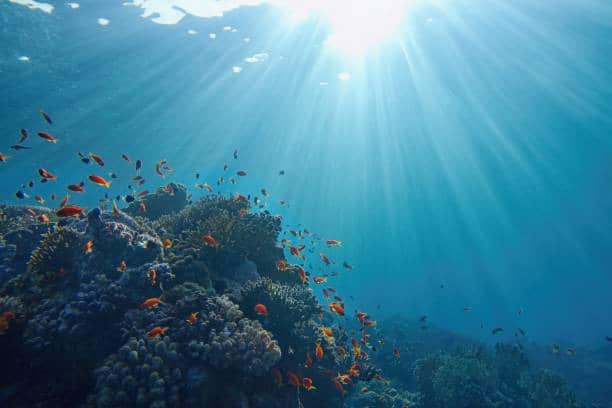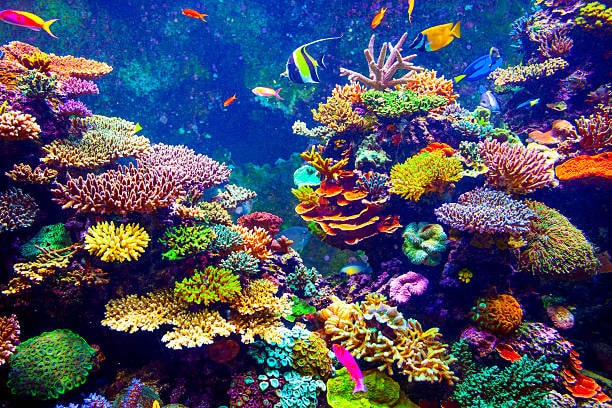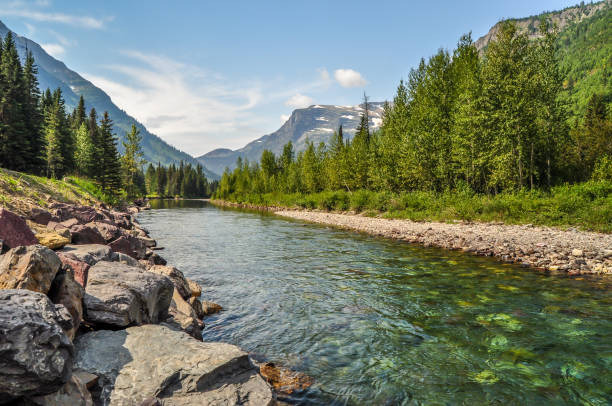The vast expanse of our planet’s oceans, rivers, and coastal regions conceals a world of extraordinary beauty and complexity. Underwater ecosystems, from the depths of the open ocean to the serene flow of freshwater rivers, harbor a rich tapestry of life that has fascinated scientists, explorers, and nature enthusiasts alike.
In this exploration, we at CPAPwater will embark on a journey to uncover the wonders of these submerged realms, delving into the diversity of aquatic ecosystems, the intricate web of life they support, and the critical need for their preservation.
The Diversity Of Aquatic Ecosystems
Aquatic ecosystems are among the most diverse and dynamic environments on our planet. They encompass a wide range of habitats, each with its own distinct characteristics and inhabitants.
1. Marine Ecosystems
Marine ecosystems cover about 71% of the Earth’s surface, making them the largest of the aquatic ecosystems. These vast environments include the open ocean, deep-sea trenches, and coastal zones. One of the defining features of marine ecosystems is their high salt content, primarily composed of sodium and chloride ions.
This salinity creates a challenging environment for many species, leading to the evolution of unique adaptations.
Marine ecosystems are known for their breathtaking biodiversity, housing an incredible variety of species, from the tiniest plankton to the largest whales. Coral reefs, a vital component of marine ecosystems, form intricate underwater cities, supporting countless species of fish and invertebrates. The open ocean, on the other hand, is a vast expanse where pelagic species roam, some of which undertake epic migrations spanning thousands of miles.
2. Freshwater Ecosystems
Freshwater ecosystems, as the name suggests, comprise bodies of freshwater such as rivers, lakes, ponds, and wetlands. Unlike marine ecosystems, these environments have lower salinity levels, making them suitable for a different set of species. Factors like water temperature, flow rate, and nutrient content often influence the freshwater ecosystem.
These habitats are teeming with life, from fish and amphibians to a rich array of aquatic plants. Rivers, characterized by flowing water, offer a dynamic environment that supports diverse fish species and provides important corridors for migration. In contrast, lakes and ponds create stable, self-contained ecosystems with their own unique communities.
3. Coastal Ecosystems
Coastal ecosystems bridge the gap between terrestrial and marine environments, serving as vital transition zones where land meets sea. These areas include estuaries, mangroves, salt marshes, and rocky shores. Coastal ecosystems are incredibly productive and provide essential services, including habitat for many species and natural barriers against coastal erosion.
Mangroves, with their distinctive, salt-tolerant trees, provide shelter for various aquatic species and act as nurseries for juvenile fish. Estuaries, where rivers meet the sea, are nurseries for numerous marine species, making them crucial for the life cycles of many fish. Salt marshes offer critical habitat for waterfowl and help filter pollutants from runoff.
Related: The Science Of Water: Its Chemical Properties
Biodiversity In Aquatic Environments

Aquatic environments are hotspots of biodiversity, hosting an astonishing array of species uniquely adapted to life beneath the water’s surface.
Aquatic Species And Their Adaptations
The multitude of aquatic species is a testament to nature’s creativity and adaptability within the aquatic ecosystem and aquatic environment. These organisms have evolved a wide range of specialized adaptations to thrive in their respective aquatic habitats.
From streamlined bodies and gills for efficient swimming to specialized appendages and sensory organs, aquatic species, including aquatic life, have finely tuned characteristics that enable them to navigate and flourish in their underwater homes.
Some of the most extraordinary adaptations can be found in deep-sea organisms, where extreme pressures, darkness, and frigid temperatures are the norm. Deep-sea creatures have developed bioluminescent capabilities, pressure-resistant structures, and unique feeding strategies to survive in these hostile environments.
Biotic Factors In Aquatic Systems
Biotic factors, such as the interactions between organisms within aquatic ecosystems, play a crucial role in shaping the dynamics of these environments. Predation, competition for resources, and mutualistic relationships are just a few examples of the intricate interactions that occur.
Predation, for instance, helps control population sizes and maintain a balance among species. Predator-prey relationships can have far-reaching effects on the composition of aquatic communities. Similarly, competition for resources, such as food and nesting sites, can drive adaptations and shape the distribution of species.
Various Species Form the Web of Life
Aquatic ecosystems are intricately interconnected, with various species forming complex food webs. These food webs illustrate the transfer of energy and nutrients from one species to another. Phytoplankton, for example, serve as the primary producers in many aquatic ecosystems, converting sunlight into organic matter through photosynthesis.
Zooplankton, in turn, graze on phytoplankton, providing a food source for small fish. This process continues up the food chain, with larger predators feeding on smaller prey. The interconnectedness of species within aquatic ecosystems highlights their vulnerability to disruptions, including the introduction of invasive species.
The decline of one species can have cascading effects throughout the food web, affecting numerous other organisms.
Coral Reefs: Underwater Marvels

Coral reefs are intricate and diverse underwater ecosystems primarily constructed by living organisms known as coral polyps. These reefs are typically found in warm, clear, and shallow tropical waters, creating breathtaking underwater landscapes. They are often referred to as the “rainforests of the sea” due to their unparalleled biodiversity.
Coral reefs are made up of calcium carbonate structures secreted by coral polyps. These structures form the foundation of the reef and provide essential habitats for countless marine species. Beyond their ecological significance, coral reefs also offer economic benefits through tourism and fisheries, making them invaluable to coastal communities.
The formation of coral reefs is an intricate process that spans thousands of years. Coral polyps extract calcium carbonate from seawater and use it to build their exoskeletons, which serve as protective homes. Over time, as generations of coral polyps grow and deposit these calcium carbonate structures, they create the stunning coral formations that make up reefs.
The growth of coral reefs is a delicate balance between coral growth and erosion. While corals add layers to the reef through their calcium carbonate exoskeletons, various factors, such as wave action and predation, contribute to erosion. This constant growth and erosion result in the mesmerizing structures that define coral reefs.
Coral Polyps in Reef Construction
Coral polyps are small, tentacled organisms that belong to the class Anthozoa. These remarkable creatures play a central role in the construction and maintenance of coral reefs. Each individual polyp contributes to the growth of the reef by secreting calcium carbonate, which forms the structural framework.
Coral polyps have a mutually beneficial relationship with photosynthetic algae called zooxanthellae, which live within their tissues. The algae provide corals with essential nutrients through photosynthesis, while the corals offer protection and access to sunlight. This symbiotic partnership is essential for the health and vitality of coral reefs.
The Biodiversity of Coral Reefs
Coral reefs are renowned for their astonishing biodiversity within the marine ecosystem. These underwater ecosystems host an extraordinary variety of marine life, from brilliantly colored fish and intricate invertebrates to apex predators like sharks. Coral reefs provide shelter, breeding grounds, and abundant food sources for numerous species, making them critical for oceanic ecosystems.
The Beauty And Functionality of Aquatic Habitats
Lentic ecosystems, which include lakes and ponds, are tranquil and serene bodies of freshwater. Their still waters offer a stark contrast to the rushing flow of rivers, creating unique habitats that support an abundance of life. Lentic ecosystems are often characterized by their clear waters, reflecting the surrounding landscape like a mirror.
These environments provide essential habitats for various species of fish, amphibians, and aquatic plants. The stillness of lentic ecosystems allows for the development of distinct ecological niches, where species have adapted to specific conditions. Exploring these tranquil waters unveils the secrets of organisms perfectly adapted to this serene aquatic world.
Life in Rivers: Freshwater Ecosystems

Rivers are the lifeblood of terrestrial ecosystems, carrying nutrients from land to sea and shaping the landscapes through which they flow. Freshwater ecosystems within rivers are dynamic and ever-changing, providing habitat for an astonishing diversity of species. These ecosystems support species adapted to varying flow rates, from swift mountain streams to meandering lowland rivers.
Rivers are bustling with activity as fish migrate upstream to spawn, waterfowl forage along their banks, and countless invertebrates thrive in the flowing waters. The health of river ecosystems is closely tied to the overall health of the landscape, making them valuable indicators of environmental well-being.
Salt Marshes
Salt marshes are coastal ecosystems located in the transition zone between land and sea. These habitats are characterized by the presence of salt-tolerant vegetation, such as cordgrass and glasswort, which thrive in the brackish waters of estuaries. Salt marshes serve as critical nurseries for various marine species, offering shelter and abundant food sources for juvenile fish and invertebrates.
The ecological significance of salt marshes extends beyond their role as nurseries. They act as natural buffers against coastal erosion, helping to protect coastal communities from the impacts of storms and rising sea levels. Additionally, salt marshes play a vital role in filtering pollutants from runoff, improving water quality in adjacent coastal waters.
Conclusion
Underwater ecosystems are vibrant and vital treasures of our planet. From coral reefs to serene lakes, they support diverse life and offer unmatched beauty. Their importance extends beyond aesthetics, serving critical ecological roles. As we appreciate these wonders, it’s crucial to act responsibly, ensuring their preservation for future generations. Every action, big or small, counts in protecting these invaluable aquatic realms. For those who value the essence of a rejuvenating sleep, visit the Resway shop here to discover CPAP accessories that can enhance your nightly rest.
What stood out to you in this read?



